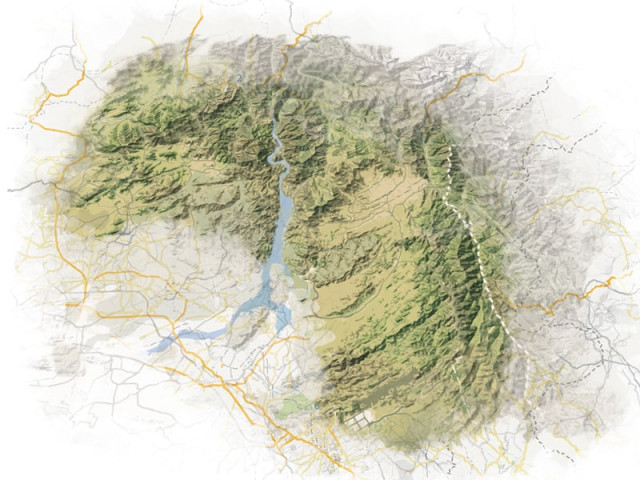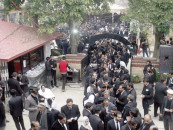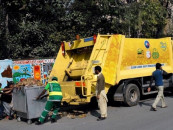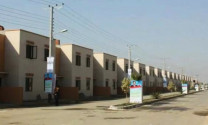Analysis: Earthquakes do not kill people, structures do
Our cities will be unable to cope with any major catastrophe, unless we step up and prepare.

Six years have passed since the deadly earthquake completely devastated many cities, towns, villages and hamlets in Azad Jammu and Kashmir and parts of Khyber-Pakhtunkhwa.
However, our population is majorly concentrated in areas that are still under threats of various kinds, including earthquakes, floods and tsunamis. Earthquake engineering experts, geologists and seismologists have issued red signals about the southern coastal strip of the country as danger zones.
One shudders when one considers the possibility of an earthquake in the chaotic urban context of a city like Karachi. Leaving all the other urban maladies aside, the city is characterised by dense inner-city areas with poor accessibility, with tens of thousands of people inhabiting each of these micro-contexts.
None of our cities are prepared to deal with disasters or emergencies at any scale. A building in Lyari collapsed a few weeks ago with hapless occupants trapped in it. It is scary to even think about a larger scale of catastrophe. A properly structured disaster management plan can not be delayed for our cities and districts any further.
The hazard
An old adage puts it thus: ‘Earthquakes do not kill people – buildings and structures do.’ Any attempt to prepare any disaster management strategy would find many chronic problems, most of which are deliberately created in connivance with our unscrupulous city building control authorities as well as city or district governments.
Permission to construct high rise structures along major corridors, unchecked densification in inner city areas, rampant violation of building regulations, whimsical twists in land use and lease grant conditions, inappropriately laid down infrastructure, particularly gas and electricity conduits, are standing hazards in cities and sub-urban locations of Pakistan.
Step 1: Stock-taking and analysis
Stock-taking and analysis of buildings and structures in various localities is the first stage of work. The buildings must be analysed for their current usage, occupancy and utility, structural stability, safety provisions including fire escapes and fire fighting systems, potential hazards points comprising electricity boards, gas installation and harmful storages, parking lot study and hazard assessment of the micro-environment in which the building is located.
Standards must be developed for the minimum conditions of survival of the building in a safe manner which must be evolved from this comprehensive inventory. Appraisal of under-construction buildings and building plans need to be done in a similar manner. On a district-wide scale, information pertinent to hazardous activities must be obtained. Storage of gas cylinders, chemicals and inflammables must be carefully noted and dealt with according to safety regulations.
Step 2: Review existing codes
After the careful analysis of data and facts related to potential disasters, the building codes and infrastructural planning procedures must be reviewed, in consonance with disaster mitigation requirements.
Up-scaling of civil defence organisations is a foremost requirement. Training of volunteers capable to take lead in an event of disaster is an important requirement for this institution. Mass awareness and basic training at school and colleges must be mobilised on war footings. Trained teams comprising capable and equipped rescue workers must be raised and deployed along each town. Disaster preparedness drills must be a regular feature in this reference. Every district must develop a disaster mitigation and coordination centre located at a safe site. Communication and management of such activities must be its terms of operation. To provide institutional cover, the provision must be made to add a disaster management unit in the existing group of offices in local government framework.
Disaster management is a multi-dimensional exercise. While preparedness for tsunamis and earthquakes is all the more vital, this effort can also be geared to deal with other kinds of disasters. There are many overlaps that help in utilizing the preparedness for combating all forms of disasters once the proper institutional arrangements are made. With climate change a stark reality, we cannot afford to overlook this vital issue.
Dr Noman Ahmed teaches at the NED University, Karachi.
Published in The Express Tribune, October 8th, 2011.






1733130350-0/Untitled-design-(76)1733130350-0-208x130.webp)











COMMENTS
Comments are moderated and generally will be posted if they are on-topic and not abusive.
For more information, please see our Comments FAQ